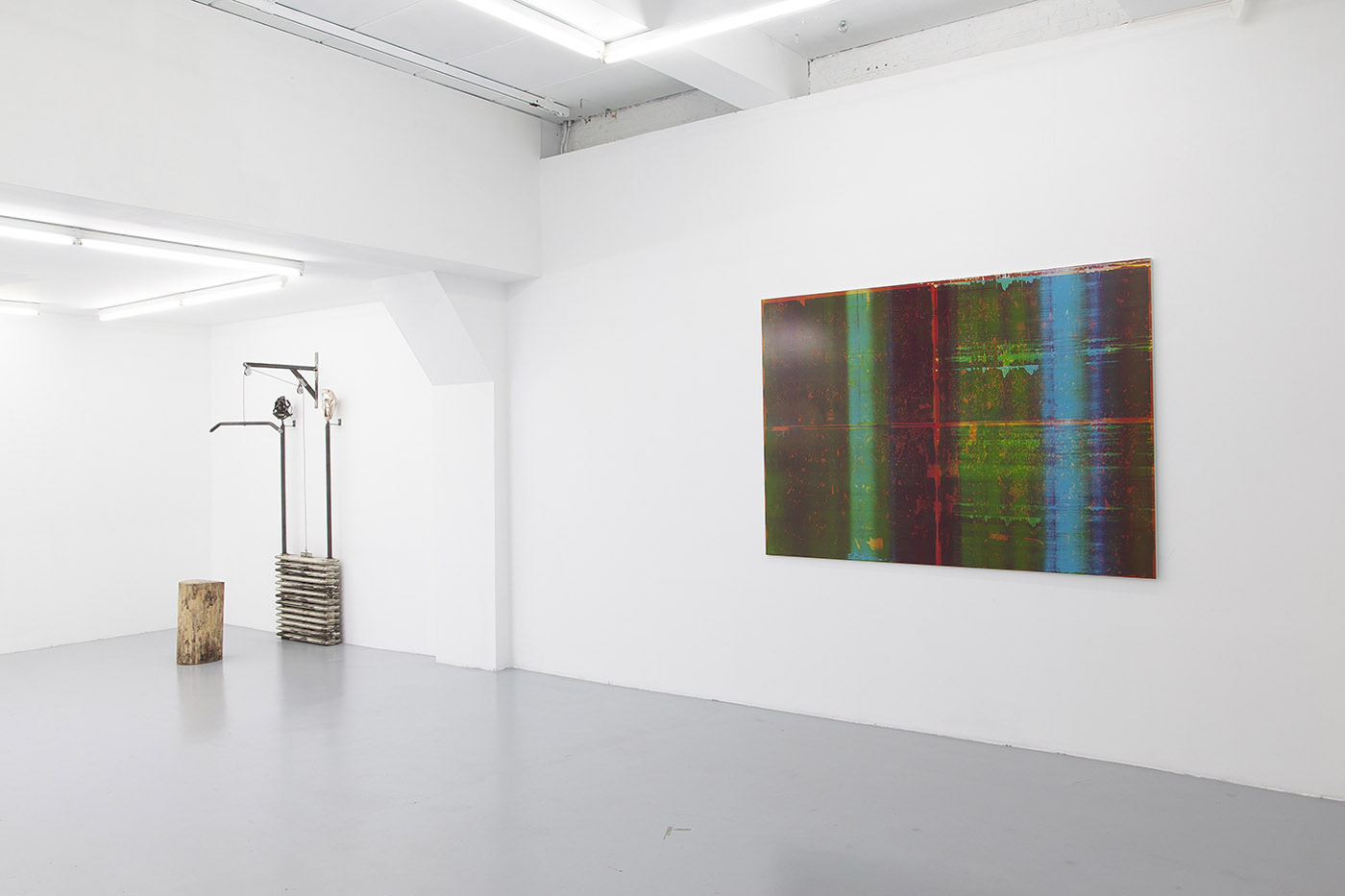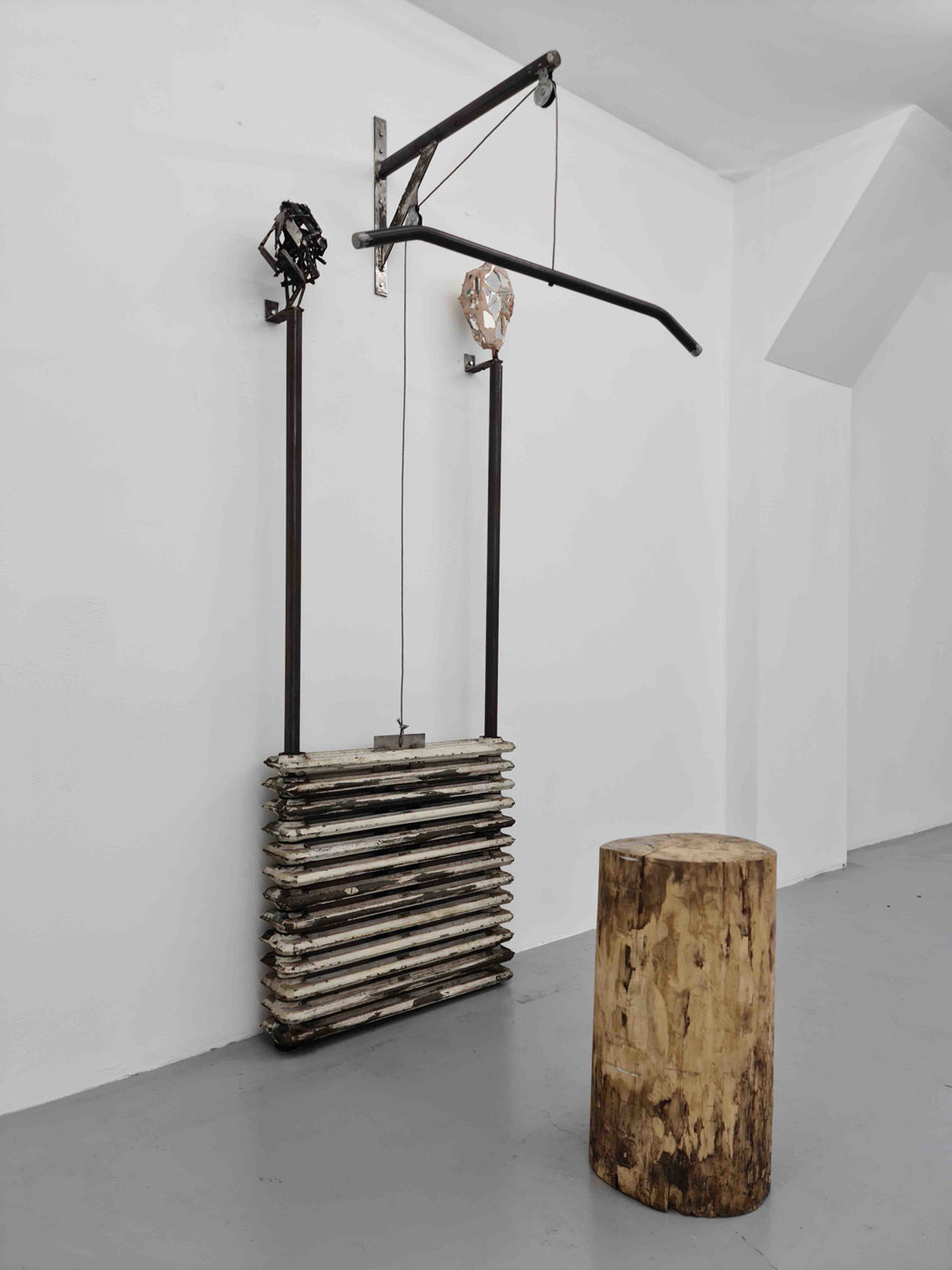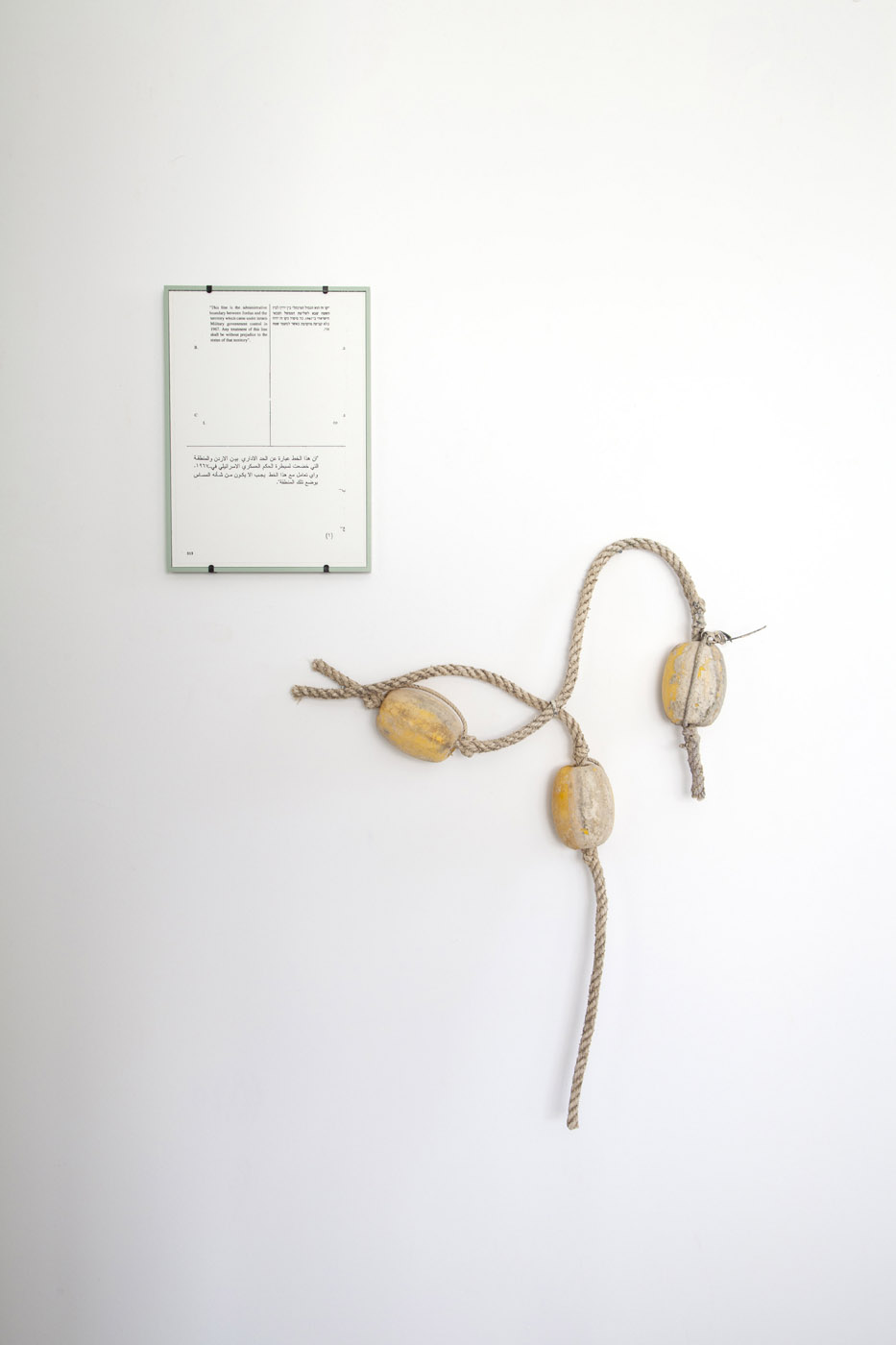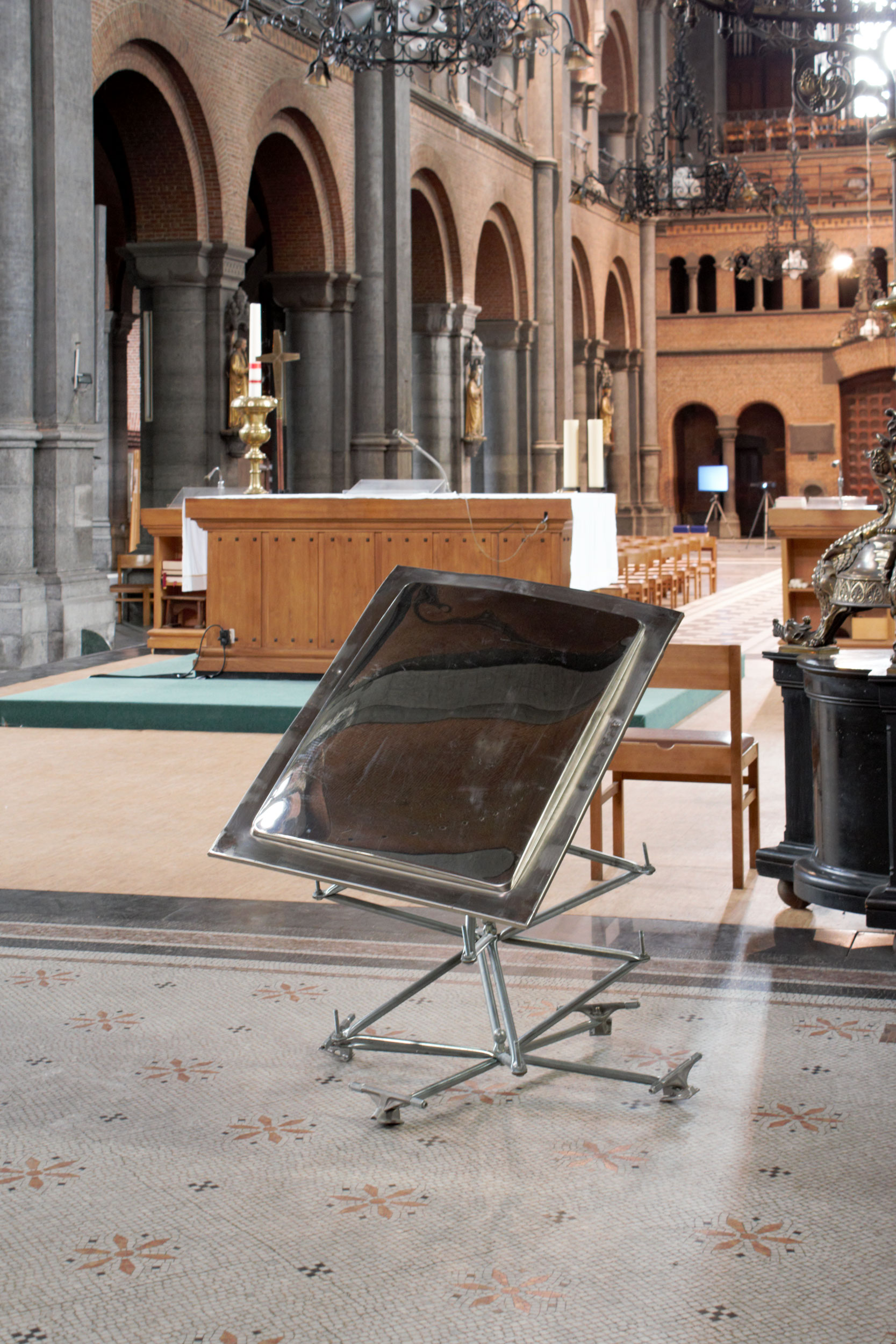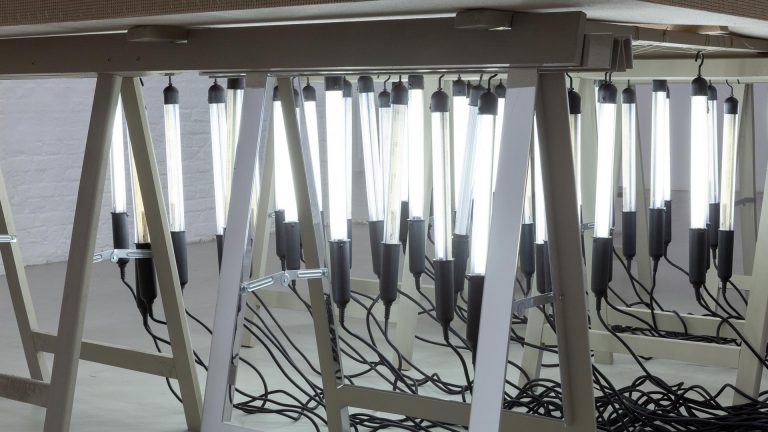Artists: Haseeb Ahmed, Amélie Bouvier, Sean Crossley, Ella Littwitz, Marcin Dudek, Emmanuel Van der Auwera
Venue: Harlan Levey Projects, Brussels, Belgium
Date: June 20 – 21, 2020
Photography: all images copyright and courtesy of the artists and Harlan Levey Projects, Brussels
Haseeb Ahmed (b. 1985, US) is a research-based artist living and working in Brussels, Belgium. He produces objects, site-specific installations, films, and writes for various publications. His work is often collaborative and draws on tools and techniques from the hard sciences to produce artworks. Ahmed received his Masters in Visual Studies at the Massachusetts Institute of Technology (MIT) and completed a Bachelor of Fine Arts at the School of the Art Institute of Chicago in sculpture and architecture. As a researcher at the Jan van Eyck Academy (Maastricht, NL), Ahmed won the Designers and Artists 4 Genomics Award with his work “The Fishbone Chapel” and initiated the project “Has the World Already Been Made?”, which has been exhibited internationally including at the Göteborg International Biennial for Contemporary Art (GIBCA, Göteborg, SE). The trilogy of exhibitions surrounding his work “The Wind Egg” culminated with a solo exhibition at the M HKA, Museum of Contemporary Art Antwerp (BE), curated by Nav Haq and the conclusion of his PhD in practice-based art from the University of Antwerp. In 2020, Ahmed will present work at Frestas: Art Triennial, Brazil and M HKA, Museum of Contemporary Art Antwerp (BE), and have a residency at SPACES, Cleveland (US).
Amélie Bouvier (b. 1982, France) lives and works in Brussels, Belgium. Her practice begins with the utilization of images and diagrams from various sources, such as scientific and military archives, Google and science-fiction material, exploring lines between real and imagined perceptions. Her laborious drawings transform images and data in order to provide new perspectives on the identity and agency of place, time and epistemological building blocks. She has had several noteworthy exhibitions including those at the Museo Patio Herreriano (Valladolid, ES), Carpe Diem Arte e Pesquisa (Lisbon, PT), Plataforma Revólver (Lisbon, PT), Sabrina Amrani Gallery (Madrid, ES), the Verbeke Foundation (Kemzeke, BE) and Museu Da Cidade (Lisbon, PT). Her work has been included in the 16th Cerveira International Art Biennial (PT) and in the 6th Biennale of Art and Culture of São Tomé e Príncipe. Last exhibitions of her work took place at Greylight Projects and V2Vingt. In addition to her personal work, Amélie is an active member of the “Enough Room for Space” project.
Sean Crossley (b. 1987, Australia) lives and works in Brussels, Belgium. To confine Crossley’s approach to one style would mean missing the incredibly varied modes with which he explores his creative impulses. From artistic quotations of past masters to abstract compositions awash with bold colors, Crossley’s art is paradoxically united by its diversity. This synthesis of ideas makes Crossley’s art a fascinating reflection on the nature of artistic conversations and exchanges across time. Reviving themes and symbols relevant in art from generations ago, Crossley reminds the viewer of his work that these motifs can bear a timeless relevance. Crossley earned his BFA from RMIT in Melbourne in 2010 after a period of study at Hogeschool voor de Kunsten in Utrecht. Since graduating, Crossley has worked to exhibit his work in a variety of locales. Recent solo exhibitions include “The History of Bleach” at Anna Marra Contempranea in Rome (2016) and “Recreational Painting” at Harlan Levy Projects in Brussels (2019). In 2019, Crossley took part in the residency programme at WIELS Centre for Contemporary Art, Brussels.
Ella Littwitz (b. 1982, Israel) lives and works in Israel. Her comprehensive artistic research explores archeology, history, botany, culture and politics through an archival approach. By confronting us with scientific data, historical documents, (archeological) artefacts and the behaviour of certain botanical species, Littwitz’s work reveals the mechanisms behind notions, such as national identity and geographical borders, offering more nuanced perspectives of political constructs and other established narratives. She is a Laureate of the Higher Institute for Fine Arts in Ghent (HISK) in 2015 and received her BFA from Bezalel Academy of Arts and Design (Jerusalem, IL) in 2009. Littwitz has exhibited in various venues throughout Israel, Europe and the US, including the 6th Moscow Bienniale’s Special Program, the 12th Istanbul Biennial, Salzburger Kunstverein (AT) and the Herzliya Museum of Contemporary Art (IL). Her works featured in exhibitions at the Center for Contemporary Art (Tel Aviv, IL), the Petach Tikva Museum (IL) and at the Tallinn Kunsthall (EE). Littwitz received the Igal Ahouvi Award Exhibition for the Most Promising Artist (IL), the Botin Foundation Prize (Santander, ES), the Arbeitsstipendium Stiftung Kunstfonds (Bonn, DE), the Mitchell Presser Excellence Award granted by Bezalel Academy (IL) and the America-Israel Cultural Foundation scholarship. She was also invited for a 3-month residency in the Guggenheim Foundation (Zurich, CH), which led to a solo exhibition at Kunst Halle Sankt Gallen (CH) titled “The Promise”.
Marcin Dudek (b. 1979, Poland) lives and works in Brussels, Belgium. Art as a strategy for living; Marcin Dudek’s practice builds from autobiographical experience and expands to explore the broader phenomenon that shaped it. These include the rituals of subculture, DIY economy and crowd dynamics – how one gets pulled into many and what control is lost as a mass gains momentum. Often working with found, salvaged or repurposed materials, Dudek constructs objects, installations, painting and performance, touching upon questions of power and aggression in the context of sport and cultural spectacle. His paintings offer insight into his overall approach, which incorporates a rather obsessive work ethic, meticulously slicing and manipulating medical tape, rubbing images into the cloth and building up a painting through collage. The level of detail and craft is manic and neurotic, meditative and thoughtful, as violence becomes an energetic aesthetic reflecting a lived experience. After leaving Poland aged 21, he studied at the University Mozarteum, Salzburg and at Central Saint Martins, London, graduating in 2005 and 2007 respectively. His work has been exhibited internationally at institutions including the Moscow Museum of Modern Art, Salzburger Kunstverein (AT), the Arad Art Museum (RO), Bunkier Sztuki Gallery in Krakow (PL), the Goethe-Institut Ukraine, and The Warehouse Dallas (US). His installation “The Cathedral of Human Labor” (2013) is on permanent view at the Verbeke Foundation in Belgium. In 2018, he presented a large installation at Manifesta 12 Palermo, which was followed by a solo exhibition at the Wrocław Contemporary Museum. Current and upcoming exhibitions include the “Psychic Wounds” at The Warehouse Dallas (US) curated by Gavin Delahunty and Socle Du Monde Biennale in the HEART Museum, Herning (DK).
Emmanuel Van der Auwera (b. 1982, Belgium) lives and works in Brussels, Belgium. Through filmmaking, video sculpture, theatre, printmaking, and other media, Van der Auwera sets up encounters with found images that provoke a questioning of our visual literacy: How do images of contemporary mass media operate on various publics and to what end? With the formal rigor of a logician, the artist dissects how images are engineered, mastering specialized industry techniques and intervening on their protocol. In so doing, Van der Auwera brings us no closer to a monolithic truth, but constructs new paradigms for reading images and understanding our relationships with them. Van der Auwera is a 2015 Laureate of the Higher Institute for Fine Arts (HISK) post-academic course in Ghent, a 2015 Langui Award recipient of the Young Belgian Art Prize, and the first winner of the Goldwasserschenking awarded by WIELS and the Belgian Royal Museums of Fine Art. His work has recently been featured in exhibitions at WIELS (Brussels, BE), Centre Pompidou (Paris, FR), Palais de Tokyo (Paris, FR), Centro per l’Arte Contemporanea Luigi Pecci (Prato, IT), Ars Electronica (Linz, AT), Casino Luxembourg – Forum d’art Contemporain (Luxembourg City, LU), Mu.ZEE (Ostend, BE), Botanique (Brussels, BE), among others. His work has been acquired by the Dallas Museum of Art (Dallas, TX, US), KANAL – Centre Pompidou (Brussels, BE), Mu.ZEE (Ostend, BE), Fundación Otazu (Pamplona, ES), Collection de la Province de Hainaut – BPS22 (Charleroi, BE), the National Bank of Belgium – IACCCA (Brussels, BE), and the Jordan Schnitzer Museum of Art (Eugene, OR, US).
Group Show at Harlan Levey Projects, exhibition view, 2020
Group Show at Harlan Levey Projects, exhibition view, 2020
Group Show at Harlan Levey Projects, exhibition view, 2020
Group Show at Harlan Levey Projects, exhibition view, 2020
Group Show at Harlan Levey Projects, exhibition view, 2020
Marcin Dudek, Swiatofit, 2019, Steel, mirror, wood, terracotta and plastic, 190 x 100 x 80 cm, 74 3/4 x 39 3/8 x 31 1/2 in
Haseeb Ahmed, Adlershof Wind Egg and Vulture, 2018, Alumide SLS stereolithograph, 19 x 12 cm, 7 1/2 x 4 3/4 in
Haseeb Ahmed, Ruach not Rauch, 2020, Graphite on paper, 102.5 x 66 cm, 40 3/8 x 26 in
Haseeb Ahmed, Two Expansions at Once II, 2019-2020, Pigmented resin on 3D print, 37 x 37 x 33.5 cm, 14 5/8 x 14 5/8 x 13 1/4 in
Amélie Bouvier, Ash Light #2, 2019, 12 drawings: pencil and graphite on paper, 106 x 108 cm, 41 3/4 x 42 1/2 in
Amélie Bouvier, Solar Demon #1, 2019, Indian ink on canvas and steel, 130 x 75 cm, 51 1/8 x 29 1/2 in
Amélie Bouvier, White Light Flare, 2017, Indian ink on paper, 103 x 73 cm, 40 1/2 x 28 3/4 in
Sean Crossley, An aesthetic attempt at ocular comprehension, 2020, Oil on linen, 35 x 42 cm, 13 3/4 x 16 1/2 in
Sean Crossley, Comfort, 2019, Oil on linen, 42 x 35 cm, 16 1/2 x 13 3/4 in
Sean Crossley, Student Case, 2019, Oil on linen, 42 x 35 cm, 16 1/2 x 13 3/4 in
Ella Littwitz, Facts on the Ground (#4), 2020, Bronze, 43 x 33 x 4 cm, 16 7/8 x 13 x 1 5/8 in
Ella Littwitz, Semiology of underground (#1), 2020, Drawing on a minefield sign, 15.5 x 18 cm, 6 1/8 x 7 1/8 in
Ella Littwitz, This line #1, 2020, Float lines (former Israel Jordan border), archival pigment print, Various dimensions
Emmanuel Van der Auwera, VideoSculpture XXI (Vegas), 2019, 2 x Manipulated LCD screens, 2 x Tripods, 1 x Plexiglass, cables, HD Video (15 minute loop), 181 x 96 x 75 cm, 71 1/4 x 37 3/4 x 29 1/2 in
Emmanuel Van der Auwera, VideoSculpture XXI (Vegas), 2019, 2 x Manipulated LCD screens, 2 x Tripods, 1 x Plexiglass, cables, HD Video (15 minute loop), 181 x 96 x 75 cm, 71 1/4 x 37 3/4 x 29 1/2 in
Emmanuel Van der Auwera, VideoSculpture XXI (Vegas), 2019, 2 x Manipulated LCD screens, 2 x Tripods, 1 x Plexiglass, cables, HD Video (15 minute loop), 181 x 96 x 75 cm, 71 1/4 x 37 3/4 x 29 1/2 in
Emmanuel Van der Auwera, Memento 13 , 2020, Newspaper .2mm aluminum offset plate mounted on aluminum frame, 69 x 99 x 2.2 cm, 27 1/8 x 39 x 7/8 in
Emmanuel Van der Auwera, Memento 14, 2020, Newspaper .2mm aluminum offset plate mounted on aluminum frame, 69 x 99 x 2.2 cm, 27 1/8 x 39 x 7/8 in
Emmanuel Van der Auwera, Memento 15, 2020, Newspaper .2mm aluminum offset plate mounted on aluminum frame, 69 x 99 x 2.2 cm, 27 1/8 x 39 x 7/8 in
Emmanuel Van der Auwera, Memento 16, 2020, Newspaper .2mm aluminum offset plate mounted on aluminum frame, 138 x 99 x 2.2 cm, 54 3/8 x 39 x 7/8 in





